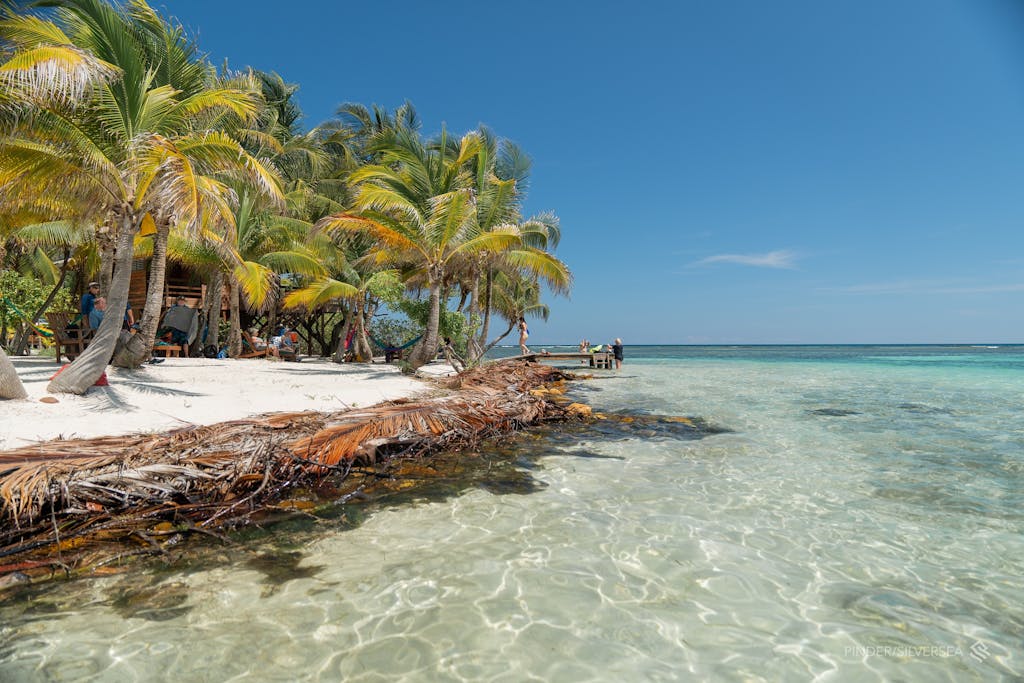Providencia Island, Colombia: An Alternative Take on Conventional Caribbean
In awe, I’m walking—greeted intermittently by patriotic locals, who sit on door stoops, on motorbikes and in trees next to the sidewalk, welcoming me to Providencia Island, Colombia. After disembarking one of Silver Cloud’s Zodiacs in a modest yet beautiful port, I have an urgent need to explore all that is in front of me.
Catchy creole music echoes from every vehicle traveling around Providencia’s only road, seeming to influence the island’s colorful buildings, its high-spirited people and their timeless way of living. Chickens roam freely under a palm-filled canopy and glimpses of Providencia Island’s colonial history are common spectacles, and are recognized as such by the island’s 5,000 or so inhabitants as they go about their business.
This is an island that has escaped the mainstream of Caribbean travel and lies frozen in an indeterminate period of time. My passion for discovery is instantly piqued, as I’m sure yours would be too.

The History of Providencia Island
Set approximately 150 miles off the coast of Nicaragua, Providencia Island’s advantageous location has made it a desirable outpost for centuries. When exploring the island’s streets, you really garner an understanding of Providencia’s sociological multiplicity, which is intriguing and educational in equal measures.
Murmurs of English – the mother tongue – Colombian Spanish and creole dialects follow me as I walk along the jungled road. Provisle, an indigenous sign language, has also been employed here for generations. While showcasing the island’s cultural diversity, this melange of languages also hints at Providencia’s inconstant past. While many nations have claimed Providencia as their own over the years, the majority of the island’s residents today consider themselves to be an islander, first and foremost.
Both Providencia and neighboring San Andrés were first inhabited by Dutch settlers in the late 1500s, before British sailors colonized the land and formed a puritan community from 1631. Next came the Spanish, who—with a troop of approximately 2,000 men—laid claim to the land in 1641, following a series of disputes with the British in the years prior. From the 1670s, once the Spanish had departed the island, Providencia was inhabited by English pirates, who gained from acts of piracy against Spanish ships.
One such privateer was Sir Henry Morgan, who landed on the island in 1670 and whose notorious reputation still lingers among the locals by way of narrated stories. Rumor has it that Morgan’s treasure remains lost on the island. Morgan’s Head—an unusually shaped geological feature on adjoining Santa Catalina, which is visible on the incoming Zodiac journey— offers a scenic spot from which to admire the tree-veiled landscape; hundreds of years after his time here, I climbed the steep steps to Morgan’s Head to gain an alternative view on Providencia. From this lofty peak, it’s easy to imagine that the destination retains the same qualities that made it a Caribbean haven all those years ago: lush palm trees veil the majority of the island, crystalline waters lap its shores and a relaxed atmosphere pervades the lifestyle.

Providencia’s Creole Culture
The 22km2 island of Providencia bore little resemblance to my previous experiences in the Caribbean: the intense equatorial sun still shone overhead, yet the destination’s historic creole culture, which seemingly pervades each sociological fiber, incorporates many international nuances to make for an entirely unique experience. Providencia’s distinctive take on creole has been shaped by Spanish, British, and Dutch ancestry, among other nationalities, and manifests its distinct character in the island’s cuisine, its dialect and many other aspects of its culture. The island’s natives are known as Raizals.
Yet for me, it is the catchy creole music that will ensure my time on Providencia Island remains inscribed on my memory. Over centuries, the islanders have crafted their individual take on the creole sound. Rhythmic drum beats, upbeat guitar riffs and sanguine lyrics intertwine in Providencia’s creole music, while traditional instruments – such as the horse’s jawbone, or the quijada – imbue the music with distinctive qualities. Performances of Providencia’s creole music are usually accompanied by traditional dance, which incorporates vibrant dress and a formal style of movement that could be considered chivalrous.

Under the Waves at Crab Cay
After imbibing the local culture, I was keen to discover another quality for which the island is celebrated: its marine life. The best of Providencia Island’s beaches are enough of an attraction to lure travelers from near and far, and can contend with the most celebrated beaches in the world. Playa Manzanillo, South West Bay and Maracaibo Bay are each worth your precious time when visiting the region. But I took a local boat to Crab Cay, which offers some of the best snorkeling and dive sites on Providencia Island.
Opting for simple snorkeling equipment, I swam around the cay to admire life underwater in what is part of the second-largest coral reef in the Caribbean. I was lucky enough to spot an abundance, including a parrotfish, a turtle and an array of other brightly colored marine creatures. A short climb to the top of Crab Cab offers an incredible view of Providencia Island with its scenic resorts and craggy coastlines.

How to Get to Providencia Island?
Getting to Providencia Island, Colombia, is no mean feat and so few foreign ears catch the energetic rhythm of this minuscule Colombian outpost. Travelers’ main methods of accessing the island include a handful of small hydroplane ferries; up to two turboprops per day, landing on a famously short runway from neighboring San Andres Island; and small cruise ships carrying Zodiacs that enable guests to disembark with ease.

